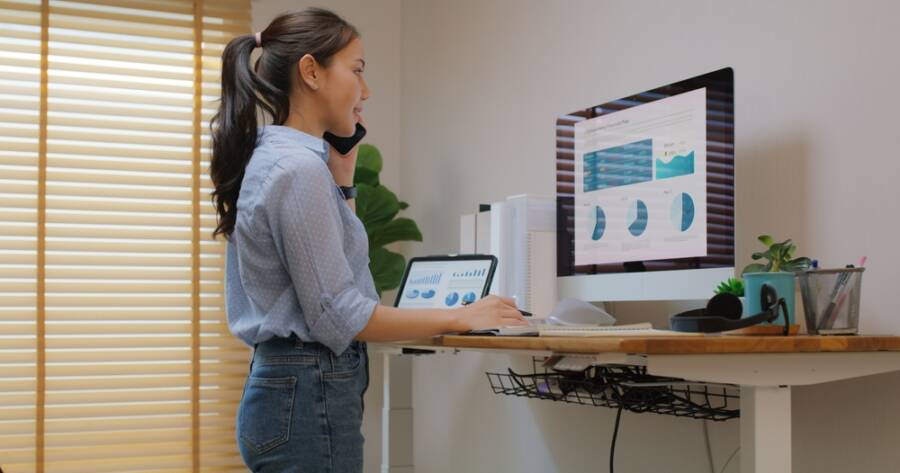Standing desks are often marketed as a way to reduce or prevent back pain, but their benefits extend far beyond spinal health. In workplaces and home offices across the United States, more people are trading traditional desks for adjustable models that allow them to work upright. The shift isn’t just about comfort—it’s about promoting better posture, improving focus, boosting energy levels, and supporting overall wellness. When used correctly, a standing desk can be an investment in both productivity and long-term health.
Improved Posture and Reduced Muscle Strain
While sitting for long periods encourages slouching and rounded shoulders, standing naturally promotes a more upright position. By keeping the spine aligned, a standing desk helps reduce strain on the neck, shoulders, and lower back.
It also encourages subtle movement—shifting weight from one foot to the other, adjusting stance, or stretching—which keeps muscles engaged throughout the day. Over time, this can help strengthen postural muscles and make it easier to maintain proper alignment even when sitting.
Increased Energy and Focus
Many users report feeling more alert and focused when working at a standing desk. Standing increases blood flow and circulation, which delivers more oxygen to the brain and may help prevent the afternoon energy slump that often accompanies long hours of sitting.
A change in body position can also break up mental monotony, leading to greater engagement with tasks. For some people, alternating between sitting and standing throughout the day helps maintain concentration and productivity without causing fatigue.
Supporting Better Metabolic Health
Research has shown that prolonged sitting is linked to slower metabolism and increased risk factors for certain chronic conditions. Standing for parts of the day, while not a substitute for exercise, can help keep the body more active.
Even small movements—like shifting your weight, pacing during phone calls, or stretching—can contribute to better calorie burn and improved circulation. This subtle increase in activity can support healthier blood sugar levels and reduce stiffness in the joints.
Encouraging More Movement Throughout the Day
A standing desk often inspires more than just standing—it encourages walking, stretching, and small bouts of physical activity between tasks. For example, when you’re already upright, it’s easier to step away for a quick walk or to perform a few stretches without the mental hurdle of getting up from a chair. Over time, this can help break the habit of remaining stationary for long stretches and promote a more dynamic workday.
Tips for Making the Most of a Standing Desk
To get the best results, it’s important to use a standing desk correctly. The desk height should allow your elbows to rest at roughly a 90-degree angle while typing, with your wrists straight and relaxed. Your computer screen should be at eye level to prevent neck strain.
Start slowly—alternate between sitting and standing to allow your body to adapt, gradually increasing standing time. Supportive footwear or an anti-fatigue mat can make standing more comfortable, and regular breaks for movement are essential.
Potential Downsides and How to Avoid Them
Standing all day can cause its own problems, such as foot discomfort, knee strain, or lower back fatigue. This is why balance is key. Alternating between sitting and standing every 30 to 60 minutes prevents overuse of any one position.
Good posture, supportive shoes, and occasional stretching can also help. Listening to your body is important—if you start to feel discomfort, it’s a signal to change your position or take a short movement break.
A Step Toward Healthier Workdays
A standing desk is much more than a back pain solution—it’s a tool that can help you work with greater comfort, energy, and focus while supporting overall wellness. By promoting better posture, encouraging movement, and reducing sedentary time, it can make the workday healthier and more engaging.
Used mindfully and in combination with regular activity, a standing desk can transform not only how you work, but how you feel at the end of the day.

